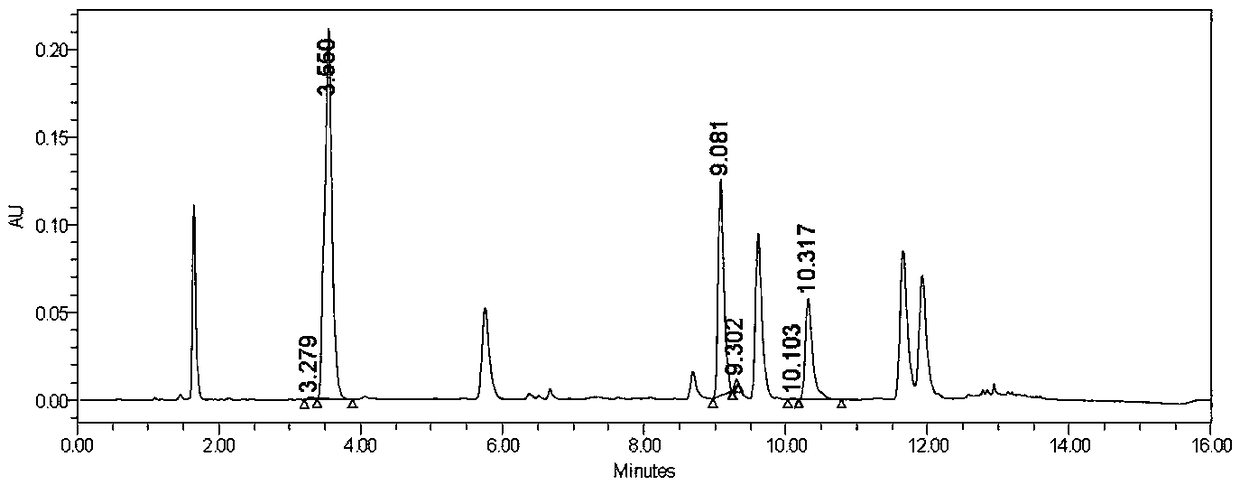Extraction process for active ingredients in leontopodium alpinum plant cell and application thereof
A technology of edelweiss alpine and plant cells, applied in the field of plant active ingredient extraction, can solve the problems of difficulty in extraction and loss of caffeoylquinic acids and the like
- Summary
- Abstract
- Description
- Claims
- Application Information
AI Technical Summary
Problems solved by technology
Method used
Image
Examples
Embodiment 1
[0039] The impact of embodiment 1 frozen storage time on the active ingredient content of alpine edelweiss plant cell culture
[0040] Harvest alpine edelweiss plant cell cultures, part of which were extracted from fresh cells immediately, and part of which were frozen at -20°C for 2-10 days for rethawing and extraction.
[0041] The method for extracting active ingredients from cell culture is as follows:
[0042] Add purified water to the fresh cells at a ratio of feed solution 1:5 (mass of fresh cells: volume of liquid added), and extract at 100°C for 1.0 h; the extraction method for cryopreserved cells is the same as above. Centrifuge the extracted extract at 6500rpm for 10min, retain the supernatant, and measure the total flavonoids, chlorogenic acid, 1,5-dicaffeoylquinic acid and 3,4-dicaffeoylquinic acid in the supernatant content. The test methods and test results from three different batches of cells are as follows:
[0043] The quantitative method of total flavono...
Embodiment 2
[0059] The extraction of embodiment 2 alpine edelweiss cell culture
[0060] Accurately weigh 100g of alpine edelweiss plant fresh cells, add 100mL of 80% ethanol at a material-to-liquid ratio of 1:1 (m / v), mix evenly, and perform ultrasonication for 20min in an ultrasonic device at a temperature of 30°C. Add 200mL of purified water twice the cell mass to the alpine edelweiss plant cell solution pretreated by ultrasonic wall breaking, and extract at a high temperature of 100°C for 0.5h, then centrifuge at 6500rpm for 10min, and carry out the supernatant Concentrate by rotation to a volume of 100 mL to obtain the cell culture extract of edelweiss alpine.
[0061] According to the total flavonoids quantitative method in Example 1, determine the total flavonoids content in the extract, standard curve, sample determination and calculation results are shown in Table 2:
[0062] Table 2 Quantitative analysis of extracts from alpine edelweiss plant cell culture
[0063]
[0064]...
Embodiment 3
[0074] The influence of embodiment 3 different extraction processes on the extract composition of alpine edelweiss plant cell culture
PUM
 Login to View More
Login to View More Abstract
Description
Claims
Application Information
 Login to View More
Login to View More - R&D
- Intellectual Property
- Life Sciences
- Materials
- Tech Scout
- Unparalleled Data Quality
- Higher Quality Content
- 60% Fewer Hallucinations
Browse by: Latest US Patents, China's latest patents, Technical Efficacy Thesaurus, Application Domain, Technology Topic, Popular Technical Reports.
© 2025 PatSnap. All rights reserved.Legal|Privacy policy|Modern Slavery Act Transparency Statement|Sitemap|About US| Contact US: help@patsnap.com



